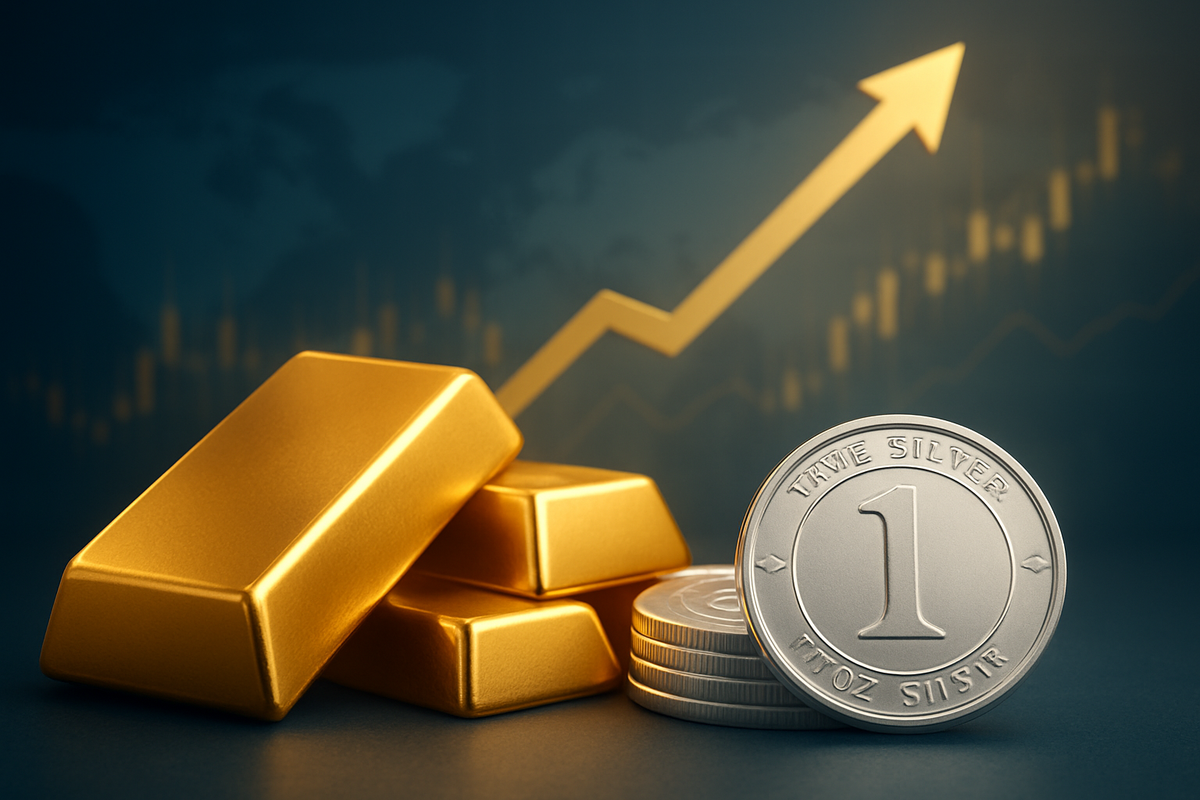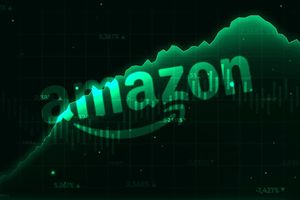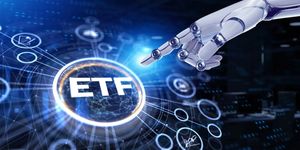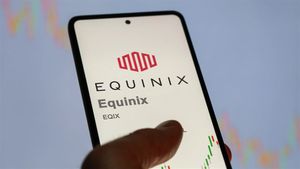
As of late October 2025, gold and silver have not only cemented their status as safe-haven assets but have also emerged as formidable leaders within the broader commodities market. Both precious metals have delivered stellar performances throughout the year, captivating investors and analysts alike with their robust gains. Gold, after touching an all-time high of $4,381.58 per ounce, has demonstrated remarkable resilience, while silver has often outshone its yellow counterpart, posting even steeper percentage gains. This impressive rally, fueled by a complex interplay of global uncertainties, inflationary pressures, and strategic central bank acquisitions, underscores a significant shift in investor sentiment towards tangible assets.
The bullish momentum, however, faced a recent, albeit healthy, correction in mid-to-late October, with both metals experiencing a sharp pullback from their peaks. This period of profit-taking and market consolidation has been largely interpreted by experts as a necessary pause rather than a reversal, setting the stage for what many predict will be continued growth into 2026. The enduring positive outlook for gold and silver highlights their critical role in diversified portfolios, offering both a hedge against economic volatility and a significant growth opportunity in an evolving global financial landscape.
Unpacking the Ascent: A Year of Record-Breaking Performance
The year 2025 has been nothing short of historic for precious metals. Gold has surged by an impressive 50-55% since January 1st, peaking at an unprecedented $4,381.58 per ounce in October, before stabilizing in the $3,980-$4,137 range. Silver's performance has been even more dramatic, with year-to-date gains of approximately 61-64%, reaching highs near $54-$55 per ounce. This sustained rally, which saw both metals enjoy a remarkable nine-week winning streak, reflects a profound shift in market dynamics and investor priorities.
The timeline leading up to this moment has been characterized by escalating geopolitical tensions, particularly ongoing conflicts in Ukraine and the Middle East, coupled with persistent trade friction between major global economies like the U.S. and China. These uncertainties have consistently driven investors towards the perceived safety of gold and silver. Furthermore, the specter of persistent global inflation, with the U.S. Consumer Price Index (CPI) hovering around 3.4% and global inflation projected at 4.2% for 2025, has underscored the importance of tangible assets as a hedge against currency debasement. Anticipated interest rate cuts by the Federal Reserve, widely expected to include a 25-basis-point reduction, have further bolstered the appeal of non-yielding assets.
Key players in this market adulation include global central banks, particularly those in Asia and BRICS nations, which have been aggressively accumulating gold as part of a broader de-dollarization strategy and reserve diversification efforts. The World Gold Council projects central bank purchases for 2025 to be between 750 and 900 tonnes, providing a robust structural demand floor for gold prices. Major Exchange Traded Funds (ETFs) focused on precious metals have also seen significant inflows, with gold ETF holdings up 17% and silver ETF holdings rising 16% year-to-date, indicating strong retail and institutional investor interest. The initial market reaction to the sustained rally has been one of cautious optimism, with many analysts advocating a "buy-on-dips" strategy following the recent October correction, which was largely attributed to profit-taking and technically overbought conditions.
Corporate Fortunes: Winners and Losers in the Precious Metals Boom
The surging prices of gold and silver in 2025 have created a clear delineation of winners and losers within the corporate landscape, primarily impacting mining companies, refiners, and even some industrial sectors. Companies with significant exposure to precious metal extraction are undoubtedly the primary beneficiaries.
Major gold mining companies such as Barrick Gold Corporation (NYSE: GOLD) and Newmont Corporation (NYSE: NEM) are experiencing substantial increases in their revenue and profitability. Higher per-ounce prices directly translate to fatter margins, allowing these companies to potentially increase dividends, invest in exploration, or reduce debt. Similarly, diversified miners with strong silver portfolios, like Pan American Silver Corp. (NASDAQ: PAAS) or Hecla Mining Company (NYSE: HL), are seeing their valuations soar. The robust industrial demand for silver, particularly from the solar and electric vehicle (EV) sectors, provides an additional layer of revenue stability and growth for these companies. These miners are likely to accelerate expansion projects and capitalize on the favorable pricing environment.
Conversely, companies heavily reliant on gold and silver as raw materials, especially those in the jewelry manufacturing sector or specific high-tech industries that haven't hedged their costs effectively, could face increased operational expenses. While the overall demand for luxury goods might absorb some of the higher costs, businesses operating on thinner margins could see profitability squeezed. However, given silver's strong industrial demand, many technology companies are likely to absorb the increased costs due to the irreplaceable nature of silver in their products (e.g., solar cells, electronics). For investors, the focus remains on companies with efficient operations, strong balance sheets, and proven reserves that can maximize their leverage to the elevated commodity prices.
Broader Implications: A Hedge Against Instability and a Green Future
The remarkable performance of gold and silver in 2025 extends far beyond mere price appreciation; it signifies profound shifts in global financial trends and offers a crucial hedge against prevailing instabilities. This event fits squarely into a broader trend of de-dollarization and a global reassessment of fiat currency stability. As central banks diversify their reserves away from the U.S. dollar, gold serves as a foundational alternative, reflecting a lack of confidence in traditional financial instruments amidst geopolitical flux and persistent inflation. The ongoing conflicts and trade tensions underscore gold’s timeless role as a safe-haven asset, attracting capital during periods of heightened uncertainty.
The ripple effects are significant. For one, the sustained demand for precious metals could put pressure on other asset classes, as investors reallocate capital towards commodities. Competitors in the investment landscape, such as certain bonds or less stable currencies, may see reduced inflows. Furthermore, silver’s dual role as both a precious and an industrial metal positions it uniquely within the green energy transition. Its integral use in solar panels, electric vehicles, and various electronics means that its demand is not solely driven by financial speculation but also by fundamental industrial growth. This makes silver a key commodity in the global push towards decarbonization, potentially influencing policy decisions around critical mineral supply chains and sustainable manufacturing.
Historically, periods of high inflation and geopolitical instability have often coincided with strong precious metal performance. The current environment echoes the 1970s and early 2000s, where gold and silver served as critical inflation hedges and stores of value. Regulatory bodies are likely to monitor the market closely for volatility and potential manipulation, though the strong underlying demand drivers suggest a fundamentally sound market. The consistent institutional buying by central banks, particularly from economies seeking to assert greater financial independence, represents a significant historical precedent for a shift in global monetary architecture.
The Road Ahead: Navigating Opportunities and Challenges
Looking ahead, the trajectory for gold and silver appears largely positive, though not without potential short-term volatility. In the short term, market participants should anticipate continued price fluctuations, especially following the recent October correction. Analysts widely advise a "buy-on-dips" strategy, suggesting that any significant pullbacks present opportune entry points for investors. The easing of geopolitical tensions or a stronger-than-expected tightening of monetary policy could temporarily dampen the rally, but the underlying structural demand drivers are expected to provide strong support.
Long-term possibilities include gold reaching the $5,000 per ounce mark by 2026, as forecasted by Metals Focus, with silver potentially climbing to $60 per ounce. These projections are underpinned by sustained central bank demand, ongoing inflationary pressures, and the continued weakening of the U.S. dollar. Strategic pivots for mining companies might involve increased capital expenditure in exploration and development to expand reserves and production capacities, capitalizing on the high prices. Furthermore, innovation in silver extraction and recycling technologies will become increasingly important to meet burgeoning industrial demand.
Market opportunities will emerge for investors seeking portfolio diversification and inflation hedges. Precious metal ETFs, physical bullion, and shares in well-managed mining companies are likely to remain attractive. Challenges could include potential supply chain disruptions, rising extraction costs, and the unpredictable nature of global events. However, the overall sentiment points to a market that is fundamentally sound, with gold and silver serving as critical components in a world grappling with economic uncertainty and a transition towards green technologies.
A Resilient Future: Gold and Silver's Enduring Legacy
In summary, 2025 has unequivocally marked a golden era for precious metals, with gold and silver demonstrating exceptional performance and resilience. Their ascent has been driven by a powerful confluence of macroeconomic and geopolitical factors: persistent global uncertainties, stubbornly high inflation, anticipated shifts in monetary policy, unprecedented central bank demand, and robust industrial applications—especially for silver in the burgeoning green energy sector. While a recent market correction introduced a degree of volatility, it is widely viewed as a healthy consolidation, reinforcing the underlying bullish trend rather than signaling a reversal.
Moving forward, the market for gold and silver is expected to remain robust. Expert forecasts suggest continued price appreciation into 2026, with significant upside potential for both metals. Their role as safe-haven assets and hedges against inflation will only intensify in a world grappling with economic and political complexities. Silver's unique position as a critical industrial metal further solidifies its long-term demand profile, tying its fortunes to the global push for technological advancement and sustainable energy.
Investors should continue to watch for key indicators such as central bank policy statements, inflation data, geopolitical developments, and industrial production figures. The current environment underscores the enduring significance of gold and silver not just as commodities, but as fundamental pillars of financial stability and growth in a rapidly changing global economy. Their adulation within the broader commodities market is well-deserved and poised to continue, offering valuable opportunities for those seeking to navigate the complexities of modern finance.
This content is intended for informational purposes only and is not financial advice






